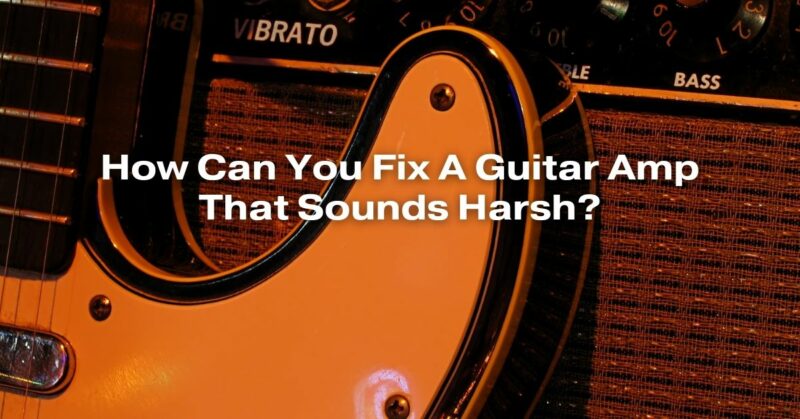Musicians often face the challenge of dealing with various issues related to their instruments and equipment. One common problem guitarists encounter is a harsh, unpleasant sound coming from their guitar amp. This issue can be frustrating, especially when you’re trying to create beautiful music. Fortunately, there are several methods to diagnose and fix a guitar amp that sounds harsh. In this comprehensive guide, we will explore the common causes of this problem and provide practical solutions to help you achieve the best possible sound from your guitar amp.
Common Causes of Harsh Guitar Amp Sounds
- Speaker Issues: The speaker is a crucial component of a guitar amp. If it is damaged or worn out, it can produce distorted and harsh sounds. Check for any visible signs of damage, such as tears or holes in the speaker cone.
- Tube Problems: If your amp uses tubes, they might be the culprit. Tubes can wear out over time, leading to a harsh tone. Replacing old tubes with new, high-quality ones can significantly improve your amp’s sound.
- Incorrect Settings: Sometimes, the harsh sound is simply a result of incorrect settings on your amp. Experiment with the tone, gain, and volume controls to find the right balance for your playing style and the genre of music you’re playing.
- Dirty or Faulty Potentiometers: Potentiometers, or pots, control various parameters on your amp, such as volume and tone. Dirty or faulty pots can introduce noise and harshness into your sound. Cleaning or replacing the pots can solve this issue.
- Improper EQ Settings: Equalization (EQ) settings play a significant role in shaping your amp’s tone. If the EQ settings are not properly adjusted, it can result in a harsh sound. Try adjusting the bass, mid, and treble controls to find a smoother, more balanced tone.
- Inadequate Power Supply: Insufficient or unstable power supply can cause distortion and harshness in your amp’s sound. Make sure your amp is connected to a stable power source, and consider using a power conditioner to regulate the electricity flow.
- Cabinet Issues: The cabinet housing the speaker can affect the sound quality. Loose components or poor construction can lead to vibrations and harsh tones. Check the cabinet for any loose screws, panels, or internal components.
Steps to Fix a Harsh-Sounding Guitar Amp
- Inspect the Speaker: If you suspect an issue with the speaker, carefully inspect it for any visible damage. If you find tears or holes, replacing the speaker might be necessary.
- Check and Replace Tubes: If your amp uses tubes, test them using a tube tester. Replace any worn-out or faulty tubes with new ones of the same type and rating.
- Clean or Replace Potentiometers: If dirty pots are the problem, carefully clean them using electronic contact cleaner. If cleaning doesn’t help, consider replacing the pots with high-quality replacements.
- Adjust EQ Settings: Experiment with the EQ settings to find a smoother tone. Start with all controls at the midpoint and make gradual adjustments while playing your guitar to find the best balance.
- Stabilize Power Supply: Ensure your amp is connected to a stable power source. If power issues persist, consider using a power conditioner to regulate the electricity and prevent fluctuations.
- Inspect and Secure Cabinet Components: Open the amp cabinet and check for any loose components. Tighten screws, panels, and internal elements to eliminate vibrations that can cause harsh sounds.
- Consult a Professional: If you’re unable to diagnose or fix the issue yourself, consider taking your amp to a professional technician. They have the expertise and equipment to identify and resolve complex problems.
Conclusion
A harsh-sounding guitar amp can be a significant hindrance to your musical creativity and performance. By methodically diagnosing the possible causes and applying the appropriate fixes, you can restore your amp to its optimal sound quality. Whether it’s replacing a damaged speaker, adjusting EQ settings, or seeking professional help, taking the necessary steps will ensure that your guitar amp produces the beautiful, harmonious tones you desire, allowing you to focus on your music without any distractions.


